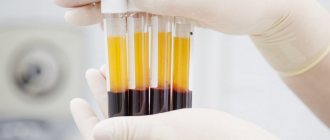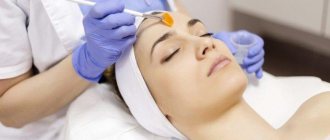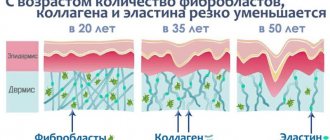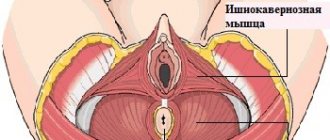About the technique
Only a few plastic surgeons who have undergone special training directly from the author of this method (Australian doctor Brian Mendelson) can talk about what spacelifting is and also perform this operation. The basis of the method is the doctrine of the existence of “spaces”. “Spaces” are usually called voids between the facial muscles filled with adipose tissue. Due to the fact that one end of the facial muscles is attached to the skin or mucous membranes, and the other to the bones of the skull, the appearance of wrinkles and folds is due to changes in their length and tension.
"Space"
With age and gravity, the muscle fibers attached to the skin begin to gradually stretch and weaken, causing sagging skin and changes in the face.
Thus, the spacelifting technique involves moving and fixing muscle fibers in a new location.
For the convenience of facial spacelifting, several zones are distinguished:
- outer corner of the eye and eyebrows, cheekbone area;
- lower eyelid, zygomatic area;
- cheeks, nasolabial fold, malar area;
- nasolabial fold, cheek, corner of the mouth;
- angle of the lower jaw, angle of the mouth, nasolabial fold;
- neck, cervical-mental angle, angle of the lower jaw.
The main advantages of spacelifting:
- Thanks to a well-thought-out procedure for performing the operation, no rough scars are formed after it is performed.
- Low trauma to blood vessels and nerves, since facial space lifting is performed in areas with low vascularization and innervation.
- Quick rehabilitation (bandages are removed the next day after surgery, swelling subsides after 2-3 days).
- No severe pain.
- Possibility of combination with other cosmetic procedures and plastic surgeries.
- There is no need for skin detachment or impact on the aponeurosis, as with SMAS lifting.
- The possibility of performing spacelifting regardless of the age and gender of the patient.
- Get quick results (effectiveness is visible already on the fifth day).
The essence of the procedure
“Spacelifting” literally means “spatial tightening”. This is the restoration of the previous position of the areas of the face located under the facial muscles. There are three such zones: on the cheekbones, cheeks and lower jaw. They are filled with fatty tissue, but over time they also weaken. And tightening these areas leads to facial rejuvenation. Moreover, you can restore it completely or individual zones:
- cheekbones, partially forehead and outer areas near the eyes;
- cheeks, space near the mouth;
- lower jaw, area on the sides of the lips and above them;
- area of the cheeks, nasolabial folds and corners of the mouth;
- neck, chin and part of the lower jaw.
Intervention will be more effective in patients of the middle age group.
Indications and contraindications for
The indications are:
- deep nasolabial folds;
- ptosis of soft tissues of the face;
- pronounced “zygomatic” bags;
- sagging skin of the cheeks, lower jaw and chin;
- decreased muscle tone on the face;
- excess fat deposits on the face;
- prevention of age-related changes on the face and neck;
- weakly expressed effect of previously performed plastic surgeries.
For facial spacelift, as for many other surgical interventions, there are a number of general contraindications. These include pathological conditions such as:
- chronic diseases in the acute stage;
- infectious diseases;
- malignant neoplasms;
- inflammatory changes at the site of the proposed intervention;
- diabetes mellitus type 1 or 2;
- severe heart and lung diseases;
- hepatic-renal failure;
- blood diseases;
- autoimmune diseases.
You can learn about the advantages of spacelifting over a classic facelift from the video:
Results of the operation
The Mendelssohn lift does not make any fundamental changes in relation to the structure of the face. After the intervention, facial features will look as natural as possible, there will be no tissue shifts or stretching effect.
Plastic results:
- giving the oval of the face clarity, improving the relief of the face;
- elimination of jowls;
- tightening the skin of the chin and neck;
- smoothing out creases and wrinkles.
The advantages of spacelifting are:
- minimal likelihood of side effects and complications;
- absence of postoperative scars;
- the effect of the operation can be assessed within a week;
- fast recovery.
Spacelifting technique
In advance of the operation, the surgeon must examine the patient and identify “spaces”. The following areas are suitable for tightening using space lifting: cheekbones, cheeks, nasolabial triangle, neck, lower jaw area.
The patient does not need to be intubated for surgery. Spacelifting is performed under intravenous anesthesia and, as a rule, its duration does not exceed two hours. Endoscopically, “spaces” are determined, which are shifted relative to their previous position and fixed in a new place. After the operation, a special bandage is applied to the face and neck, which is removed the next day.
Rehabilitation period
Thanks to the unique surgical technique, patients do not need a long rehabilitation period after spacelifting. The hospital stay is no more than 2-3 days. If swelling or minor hematomas occur after a facelift, they do not require additional correction and go away on their own within 2-3 days. Subtle scars are located in natural folds, so they are invisible and do not need to be disguised.
Compatibility with other anti-aging procedures
Low invasiveness and low trauma allow this type of lifting to be performed in combination with lip or eyelid surgery, forehead lift and other anti-aging plastic surgeries. For comprehensive rejuvenation, the following can also be used: laser fractional photothermolysis using the Fraxel device, laser nanoperforation, endoscopic lifting, peeling. It is important to remember that only a qualified, licensed doctor should indicate the methods of treatment and the extent of manipulations performed.
FACE AND NECK PLASTY, LIFTING, RITIDOPLASTY
- Facelift (rhytidoplasty) and neck
- SPACELIFTING
- Preparing for surgery
- How is the operation performed?
- After operation
- Complications
- Questions and answers
Facelift (rhytidoplasty) and neck
Skin aging
inevitably, over time, the skin of the face and neck loses its elasticity.
Crow's feet appear in the corners of the eyes. Fine forehead lines turn into wrinkles, then become deep wrinkles. The jawline and cheeks sag, a double chin and vertical folds appear in the front of the neck. Heredity, personal habits, heavy physical activity and the sun
contribute to facial aging.
Life expectancy is increasing and the number of elderly people is increasing, so face and neck lift
, called
rhytidoplasty
, ranks third among all plastic surgeries.
In a conventional face and neck lift, an incision is made from the temporal region along the hairline to the back of the head, then excess skin and subcutaneous fat tissue is excised and the incision is sutured with a cosmetic suture. , SMAS lifting surgery has recently been performed in most cases.
.
SMAS
(superficial muscular aponeurotic system) is translated as
superficial muscular aponeurotic system
. This is the fibromuscular system, which is located under the skin and fat layer in the lateral facial areas and on the neck, and connects the muscle layer to the skin, responsible for facial expressions. SMAS also stretches with age, and when lifting this system, deeper layers are affected, which allows you to restore the former oval of the face, preserving the natural, relaxed contours of the mouth and eyes, unlike a simple lift. The final effect of SMAS lifting is visible after 1.5-2 months and lasts for 10-15 years.
Often, in order to avoid contrast, blepharoplasty is performed at the same time, and after recovery, lipofilling of wrinkles that were not eliminated by a lift.
Qualification and experience of surgeons at our Center for Plastic Surgery and Cosmetology “Medrekplast” in Minsk
allows you to perform any
face and neck lift operations, including SMAS lifting
.
Indications:
- Pronounced signs of facial aging
.
SMAS lifting is best done before the age of 45, when the skin has not yet completely lost its elasticity and ability to contract. But all this is individual, and the doctor will decide in each case which type of lift is right for your skin
.
Contraindications:
- diseases that are accompanied by reduced blood clotting
; - hypertension
, severe
cardiovascular diseases
; - diabetes mellitus
and severe
thyroid
; - acute and chronic infectious
diseases, including skin diseases; - predisposition to the formation of rough scars
; - oncological
diseases; - collagenoses
;
Photos of patients before and after facelift surgery
which were carried out at our
Center for Plastic Surgery and Cosmetology “Medrekplast” in Minsk:
SPACELIFTING is a completely new method of surgical rejuvenation of the face and neck
When age-related changes begin to upset us, many people think about a face and neck lift, but do not do it because of the fear of surgery and post-operative discomfort. It is for such people that a modern solution to their problem has appeared - spacelifting.
What is spacelifting?
SPACELIFTING
is an advanced method of surgical
rejuvenation of the face and neck
, which is based on a completely new philosophy of restoring sagging tissue in these areas. Its essence is that the tightening of these tissues is carried out inside the “spaces” (from the English “space” - space), which are located between the fibers of the facial muscles and are free from blood vessels and nerve endings. During surgery, the surgeon must identify these spaces, penetrate them with an endoscope, then move the desired muscles and secure them in that position.
The invaluable advantage of SPACELIFTING
the fact that this is such
a low-traumatic
operation that the recovery period after it takes 5-7 days, with virtually no incisions and postoperative pain, swelling in most cases goes away on the third day, bruises and hemorrhages occur only in every tenth patient. Moreover, the pronounced rejuvenating effect achieved by this operation does not disappear.
SPACELIFTING operation
They are done under intravenous anesthesia, which adds another advantage.
A day after the operation, a special bandage will be removed, and you will stay in the hospital for 1-2 days under observation. Due to the fact that SPACELIFTING
is a minimally invasive operation, additional plastic rejuvenating operations such as blepharoplasty, endoscopic forehead lift, and contour plastic surgery are performed in one stage.
SPACELIFTING technique
was developed by the clinic of Australian plastic surgeon Dr. Brian Mendelson, and those surgeons who perform this promising operation undergo training with Dr. Mendelson himself and receive the appropriate certificate.
It is the presence of these grounds in the surgeon of our Center for Plastic Surgery and Cosmetology “Medrekplast” in Minsk, Viktor Vasilyevich Baryash, that allows us to offer SPACELIFTING to those who dream of a young face, but are not ready for long and uncomfortable rehabilitation.
Preparing for surgery
Before the operation you must:
- complete all prescribed examinations and tests
- talk to an anesthesiologist
- Tell your surgeon and anesthesiologist about all medications you are taking
- ask someone to drive you home after surgery
Two weeks before surgery you cannot:
- smoke
- drinking alcohol
- sunbathe, as ultraviolet radiation suppresses the immune system
- take medications that reduce blood clotting
, including aspirin
On the day of surgery:
- Three to four hours before surgery, large meals and liquids are prohibited. But this issue should be discussed with the anesthesiologist, as this directly affects the safety of pain relief.
- Do not apply creams or make-up
. It is advisable to strive for the absence of skin irritation.
How is the operation performed?
You come with ready-made tests. The administrator draws up a medical history. You fill out the necessary documents and sign consent for the operation. The administrator escorts you to the room, where you change into disposable underwear, which is required in order to enter the operating room. Then you go to the surgeon and clarify all the details with him.
This is followed by an examination by the surgeon and anesthesiologist, after which a decision is made on the possibility of performing the operation at the moment. A photo of your face and neck is usually taken
in several projections.
Incision lines are drawn
on the skin with a special marker .
The operation is performed in a hospital setting. Depending on the planned volume of the operation and individual sensitivity, both combined and general anesthesia are possible.
Operation
usually lasts from one and a half to three hours, depending on the amount and location of tissue removed. The surgeon makes a long incision, starting from the temporal region and ending at the back of the head. After this, the skin is peeled off, redistributed and excess is removed. If necessary, liposuction is performed, that is, the excess fat layer is removed.
After operation
After the operation, you will be taken to the recovery room, where you will stay for 1-2 days under the supervision of a doctor.
.
The supporting bandage
is removed after 4-5 days,
the stitches
are removed on days 10-12, and by the end of the second week bruises and swelling disappear.
After the operation there may be
a rise in body temperature to 37.5°C, swelling of the face, especially around the eyes, pulling sensations in the back of the head, numbness and tingling of the skin, which
is normal and gradually disappears
.
To speed up recovery, physiotherapeutic procedures
.
The recovery period after a SMAS lift is somewhat longer and more difficult than after a regular lift, and lasts 2-3 weeks, so you first need to worry about releasing such a period of time from work, because sick leave is not provided for cosmetic surgeries
.
What to do after surgery:
- For the first three days , apply cold
to the operated areas to stop bleeding and reduce swelling. - During sleep, the position of the head
should be higher than the position of the chest for several days. - To prevent infectious inflammation, take prescribed antibiotics for 5 days
. - With your usual diet, you should not consume too much liquid
, especially if significant swelling develops.
You should limit your consumption of spicy foods
until the signs of inflammation disappear. - physical activity, swimming, baths and saunas
for two to three weeks . - Avoid smoking and large doses of alcohol
. - Only on the fifth day after the operation is it possible to take a shower
, and it is very important to regulate the temperature of the water (the shower must be taken neither cold nor hot).
It is not recommended to touch the postoperative areas with a towel or vigorously rub them. After taking a shower, be sure to disinfect
all seams with a cotton ball moistened generously with alcohol. - If necessary, visit your doctor in a few days for a follow-up examination
. - For several days, do not take
aspirin, ibuprofen, or other medications or herbal supplements that may increase bleeding. If necessary, use acetaminophen (Tylenol, etc.) to control pain.
Contact your doctor immediately if you experience any
of the following conditions:
- Dyspnea
- Chest pain
- Unusual heartbeat
- Bleeding
Complications
Possible complications of a facelift:
- Infection and bleeding
- Possibility of affecting nearby nerve fibers, which may subsequently lead to loss of local sensitivity
- Hematoma
- Partial numbness
- Necrosis of some skin flaps
- Surgical risks, including reactions to anesthesia
All these complications are extremely rare and directly depend on the doctor’s skill, so choosing an experienced plastic surgeon with the appropriate qualifications
, You will reduce this probability to zero.
These are the specialists who work in our Center for Plastic Surgery and Cosmetology “Medrekplast” in Minsk
, who will perform the operation at the highest professional level.
Questions and answers
How long does the recovery period after surgery last?
— Most patients return to work within 2-3 weeks. But if you will be participating in social events, it is best to schedule them 4-8 weeks after surgery.
How to hide temporary side effects?
— After the operation, temporary side effects are possible - changes in skin color, swelling, and incision lines. During your consultation, the surgeon will describe to you in detail post-operative makeup techniques that help hide these phenomena.
How long does the result last after facial plastic surgery?
— The duration of the effect depends on the individual characteristics of the body. Of course, even after 15 years the result of the operation will be noticeable. Some never undergo facial plastic surgery, while other patients return again after 7-15 years.
Possible complications
Despite the fact that the operation is minimally invasive and virtually bloodless, the risk of minor complications still remains. Most often, spacelifting is complicated by hematomas, inflammatory changes, bleeding, sensory disturbances and discomfort in the surgical area, as well as slight tissue swelling. If any complications occur, you should contact your treating specialist to eliminate the risk of more severe pathologies.
Results (photos “before” and “after” spacelift):











